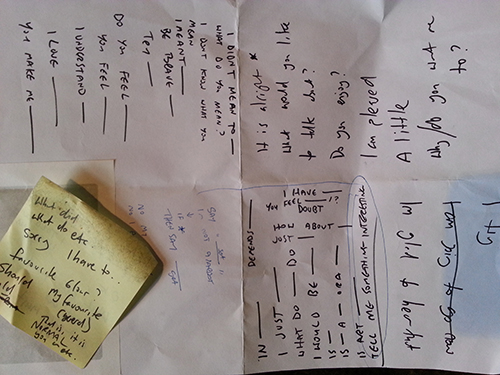Pinnochion#1, the chatbot I have been writing throughout this project, is written in a language (or XML dialect depending who you ask) called "AIML", or "Artificial Intelligence Markup Language". This was developed by Richard Wallace and forms the brain of "A.L.I.C.E". It is the basis of all bots created on the Pandorabots website. You can talk with "A.L.I.C.E." here.
There is plenty of information on AIML online, so I'm not going to go into too much detail on how it works here. I followed the tutorials from Pandorabots on Youtube which starts at the very beginning, and gives an overview. From that point it is easy to look up more detail either on the Pandorabots site itself or through A.L.I.C.E or any number of forums. I didn't need much more than the very basics as I was interested in how much I could do with very little. Pinnochion#1 is very basic, having less tricks even than Eliza. (Chris Watkins recommended a book by Joseph Weizenbaum which I am currently waiting to be delivered).
It basically works by matching inputs from a user to a list of possible inputs, and outputting one of a selection of pre-written responses to that input. This actually gives quite a lot of flexibility, as if you ask "why does it snow?", it only needs to be able to recognise "why does it", or even just "why" to provide a fairly convincing response.
There are many AIML sets available to download and experiment with, but I chose to write Pinnochion#1 from scratch. I wanted to learn what people wanted to talk about, and to follow its development from knowing nothing. I would only teach it anything in response to conversations it had. Initially with me, then with friends and family, then strangers. It is unbelievably time consuming. I didnt realise quite what an endavour it was until I went to print out Pinnochion#1's AIML for the stall. It came to well over 200 pages of 10 point text. And it is still growing.

